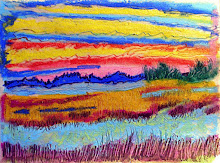The smile in a simple classification of feelings:
The smile is universal, what the ethologists call "a sign stimulus." The face is a generator of signs that communicate a range emotional reactions to social situations. You don't have to be a human being to show emotional sign stimuli. You can draw simple cartoons that do it. Animal faces are often perceived to be expressing feelings which they very likely don't have, just because of the way the parts of the face are drawn.
Furthermore, people's faces often appear to be permanently fixed to broadcast certain feelings that they really don't feel. Recent research has shown that convicted murderers with permanently upturned (smiling) mouths are less likely to get the death penalty when sentenced than those with downturned mouths.
Facial Schemes:
There are two major components of emotions in the face: the eyebrows and the mouth. The eyebrows, and the top of the face reflects the basic "I am capable " or "I am helpless" dimension. The mouth is the organ for receiving or rejecting. As emotional signs, the mouth expresses acceptance or "yes" or rejection or "no." In the simplest possible form, the face has an alphabet of four emotional expressions, of which two represent kinds of smiles.
Let's look at these expressive signs one at a time. They involve the position of the inner points of the eyebrow and the outer points of the mouth.
- The inner points of the eyebrow point up. This means "I am helpless." The outer points of the mouth go down. This is the crying icon. I am helpless and I don't like it.
- The inner points of the eyebrow point up ("I am helpless"). The outer points of the mouth go up. This is the "nicest man in the world icon. "I am helpless and I like it" (which usually translates as "I won't hurt you").
- The inner points of the eyebrow go down. This means "I am capable or in control." The outer points of the mouth go down. This is the angry icon. "I am capable and I am disapproving."
- The inner points of the eyebrows go down ("I am capable"). The outer points of the mouth go up. This is a particular kind of smile, sometimes you could interpret it as a sardonic smile or even a cruel smile. "I am capable and I like it."
In real life, of course, the range of emotions is much broader. The face is a continuously changing display of feelings. But the smile is one of the most basic emotional signs. Modern research also suggests the existence of feedback loops. People can raise their feelings of optimism or capability by practicing making those basic facial expressions. There is a kind of laughter yoga practice. People practice laughing, even if nothing is funny. They find that the laughing is contagious and leads to a change in inner feelings.

No comments:
Post a Comment